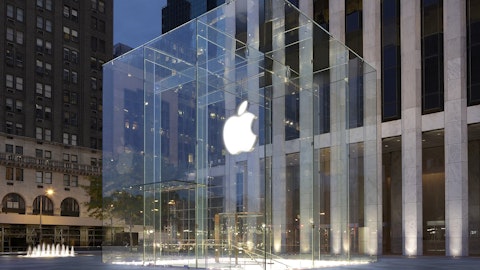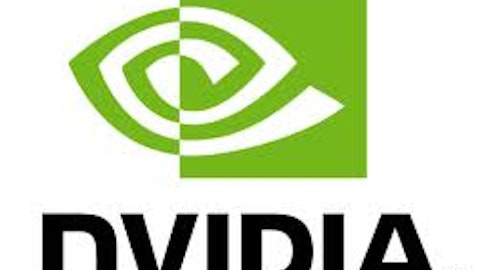Two weeks ago, PC giant Dell Inc. (NASDAQ:DELL) told investors that it would be taken private in a $22.4 billion leveraged buyout, handing control of the company over to CEO Michael Dell and private investment firm Silver Lake. For most investors, that was the end of Dell, which makes its recently released fourth-quarter earnings — which are bleaker than ever — read like an obituary.
While its fourth-quarter numbers are fairly irrelevant for Dell shareholders, its results shed light on the future of the crumbling U.S. Wintel PC empire, which has been steadily gobbled up by Apple Inc. (NASDAQ:AAPL) and a slew of Asian competitors such as Lenovo, Asus and Acer.
The Obituary
For its fourth quarter, Dell earned 30 cents per share, or $530 million — a 31% decline from the 43 cents per share, or $764 million, it earned in the prior year quarter. Adjusting for one-time charges, earnings came in at 40 cents per share, beating the FactSet estimate by a penny.
Revenue slid 11% from the prior year quarter to $14.3 billion, also topping the analyst forecast of $14.1 billion.
Although Dell beat forecasts on both the top and bottom lines, no one rejoiced — the bar had been set so low that the company could have simply tripped over it. The company also canceled Michael Dell’s scheduled participation in the fourth-quarter conference call with analysts, which makes the earnings release even more irrelevant.
Don’t bury me alive … yet!
For some newer Dell investors, Michael Dell’s buyout offer of $13.65 per share — a 25% acquisition premium to its closing price on Jan. 11 — seems fair and justified. For longer-term investors, however, the offer is a pittance for a company that was once worth $100 billion and the largest PC manufacturer in the world.
Dell’s board of directors is in a hurry to close the books on the deal, unanimously approving the deal and stating that it was not considering any competing offers. The vote is still pending a shareholder vote, but the board is confident that the deal will close before the end of its second fiscal quarter.
However, the road is not all clear for a leverage buyout yet. Southeastern Asset Management and T. Rowe Price Group, Inc. (NASDAQ:TROW), two of Dell’s largest shareholders, have publicly stated that they will vote against the buyout unless they receive a higher buyout offer. Other institutional and retail investors have voiced support for the two companies, which has increased the likelihood of a higher offer.
In lieu of a tombstone, let’s erect a tablet
Dell’s heyday was in the late 1990s, when demand for PCs skyrocketed as Internet penetration increased. Although the dot-com crash brought Dell back down from its all-time high of $56 per share, the company recovered steadily throughout the following decade — until Apple woke up.
In 2010, Apple released the iPad, the first tablet computer to achieve mainstream success, and mobile competitors such as Samsung and HTC quickly followed suit with similar products powered by Google Inc (NASDAQ:GOOG)’s Android operating system.
This series of events turned the entire PC market on its head, and business models that Dell and Hewlett-Packard Company (NYSE:HPQ) had grown accustomed to were no longer working.

DELL Revenue TTM data by YCharts
Dell and HP simply couldn’t respond quickly enough to the rise of tablet computers, and with good reason — 45% to 50% of Dell’s annual revenue is generated from desktop and notebook PC sales. It wasn’t a business model that could be changed overnight.
However, other companies weren’t afraid to gamble. Let’s take a look at the tablet release timetable below to see where Dell and HP went wrong.
| Company | First Current Gen Tablet | Operating System | Release Date |
| Apple | iPad | iOS | April 2010 |
| Samsung | Galaxy Tab | Android 2.2 | September 2010 |
| Dell | Inspiron Duo | Windows 7 | December 2010 |
| BlackBerry | Playbook | QNX | April 2011 |
| Hewlett-Packard | TouchPad | webOS | July 2011 |
| Lenovo | IdeaPad K1 | Android 3.1 | July 2011 |
| Amazon | Kindle Fire | Android 2.3 Custom | November 2011 |
| Microsoft (NASDAQ:MSFT) | Surface | Windows RT/8 | October 2012 |
Source: Wikipedia
The answer is simple: the three most successful non-Apple tablet makers — Amazon.com, Inc. (NASDAQ:AMZN), Samsung and Lenovo — all released Android tablets.
The customizability and universal software compatibility of Android, all unified by the Google Play store and Google’s cloud-based ecosystem, made these tablets far more appealing. Granted, the Kindle Fire could not access the Google ecosystem without a slight modification, but Amazon’s own App Store and cloud-based system was an attractive alternative.
Dell, on the other hand, clumsily offered the Inspiron Duo, a Microsoft Corporation (NASDAQ:MSFT) Windows 7 hybrid device that was quickly retired due to low demand. It was replaced by the equally confusing XPS 12, a Windows 8-powered tablet that features a screen that can be rotated and slid back onto the keyboard to transform into a tablet — similar to Asus’ Transformer series but lacking the detachability feature. The result was a bulky unit, weighing 3.36 pounds, that costs $1,200 — far more than other current generation tablets or lightweight Ultrabooks.
The XPS 12 simply proves that Dell simply does not understand current market demands at all.
Microsoft has one foot in the grave, too
Microsoft is so afraid that its longtime ecosystem partners will realize that Android, not Windows, is the inevitable future of mobile computing that it immediately invested $2 billion in Dell when it announced that it would go private. That panicked reaction should raise red flags with investors indicating that Ballmer and company know that the end might be near.
After all, only its two largest U.S. hardware partners, HP and Dell, have shown the company any measure of loyalty. Taiwanese manufacturers Asus and Acer, two of the largest PC manufacturers in the world, have already offered Android tablets, much to the chagrin of Redmond.
Should we dig one grave … or two?
It is too late (and pointless) for new investors to buy shares of Dell today. The possibility of a higher offer may push the stock price up slightly, but the stock has reached the end of the line. Instead, investors should pay closer attention to Hewlett-Packard, the last man standing in the American PC market. Over the past three years, Hewlett-Packard has fared even worse than Dell, changing CEOs like pants and pointlessly overpaying for companies that it could not integrate. Simply look at this comparison of HP and Dell’s cash reserves versus long-term debt.

HPQ Cash and Equivalents data by YCharts
Both companies have soaring debt and weak cash reserves. But considering that Dell has actually grown its cash pile by 32.85% while HP has lost 2.5% over the past five years, maybe it’s time to tell Dell’s gravedigger: “Make room for two, please.”
The article The Death of Dell originally appeared on Fool.com and is written by Leo Sun.
Copyright © 1995 – 2013 The Motley Fool, LLC. All rights reserved. The Motley Fool has a disclosure policy.





